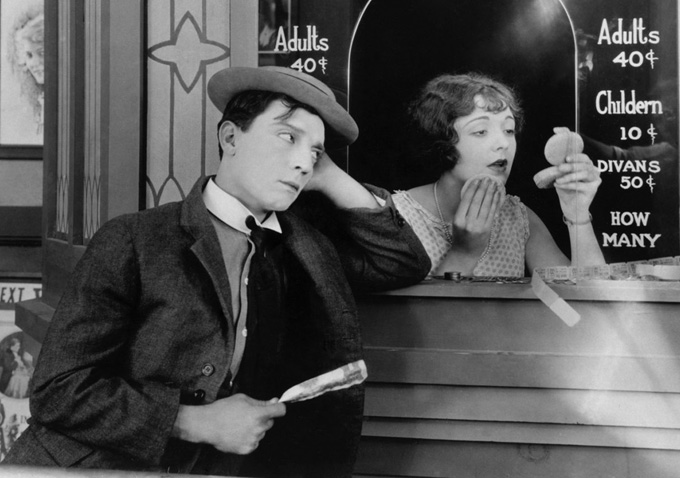 A brilliant director in his own right, the inimitable Orson Welles once called Buster Keaton “the greatest of all the clowns.” It’s true, of course; Keaton continues to not only inspire all things vaudevillian and slapstick in modern cinema, but perfected an entirely new kind of joke –– the sight gag –– that was built upon the ingenious balance of imagination and improvisation. I’d bet that you cannot watch a comedy (or a drama, for that matter) that doesn’t include a nod to Keaton –– particularly in the aesthetic of Wes Anderson, the physicality of Jackie Chan, and the expressionless brilliance of Bill Murray.
A brilliant director in his own right, the inimitable Orson Welles once called Buster Keaton “the greatest of all the clowns.” It’s true, of course; Keaton continues to not only inspire all things vaudevillian and slapstick in modern cinema, but perfected an entirely new kind of joke –– the sight gag –– that was built upon the ingenious balance of imagination and improvisation. I’d bet that you cannot watch a comedy (or a drama, for that matter) that doesn’t include a nod to Keaton –– particularly in the aesthetic of Wes Anderson, the physicality of Jackie Chan, and the expressionless brilliance of Bill Murray.
READ MORE: ‘Mad Max: Fury Road’ and Buster Keaton’s ‘The General’: Together at Last
In a new video essay from Every Frame a Painting, Keaton’s undeniable talents and paradigms as a comedian are explored, and we get some insight into the action behind some of the most hysterical scenes in film history. To remain on the safe side, Keaton applied rules to his jokes, specifically that actions tell a story more than cue cards (remember, these films are silent for the most part). In his career, Keaton claims to have only utilized 56 title cards per picture (the standard was over 200 at the time), using the age-old art of body language and the idiosyncrasies of his characters to convey an idea.
Whether or not you’ve seen “The General” dozens of times like me, or you’re new to Keaton’s distinguished humor filled with posterior camera angles and geometric lucidity, this essay will have you laughing and smiling –– nobody falls as perfectly as Buster Keaton.





